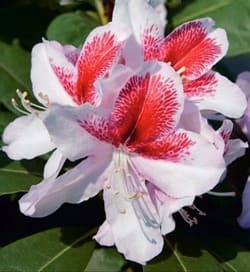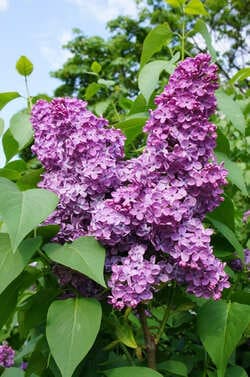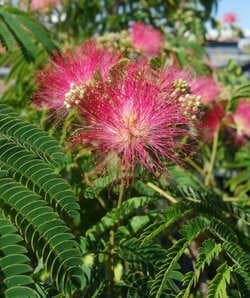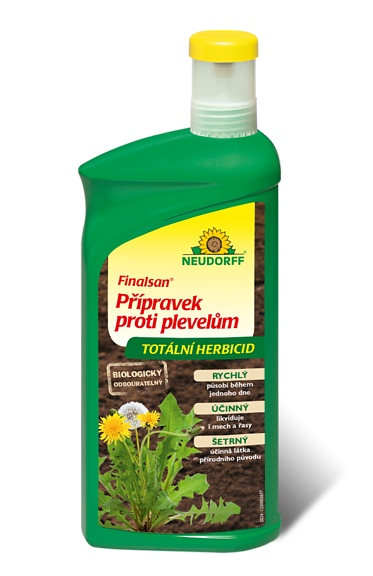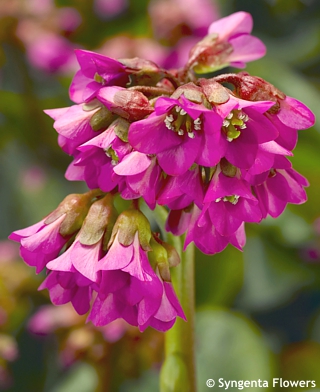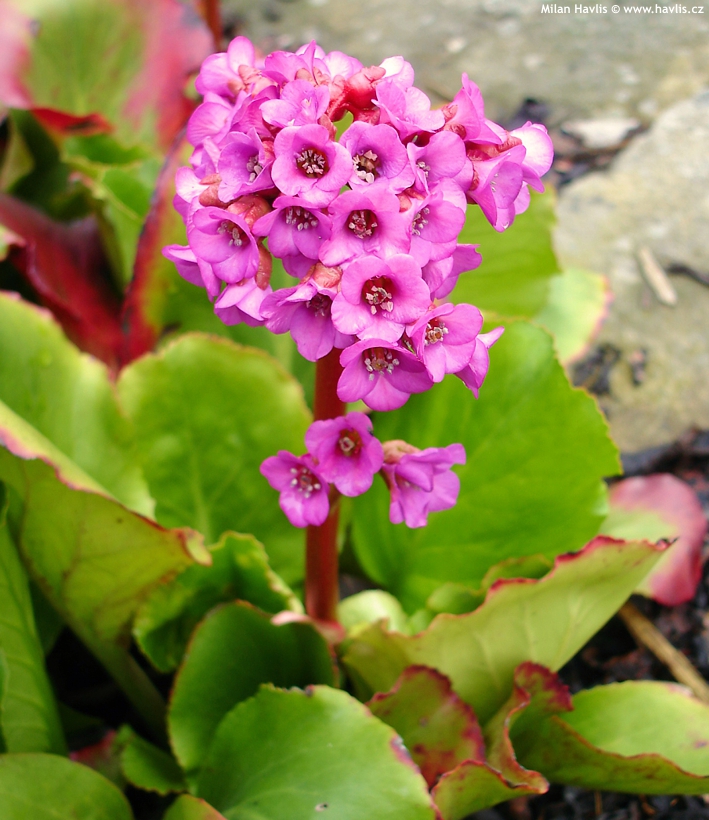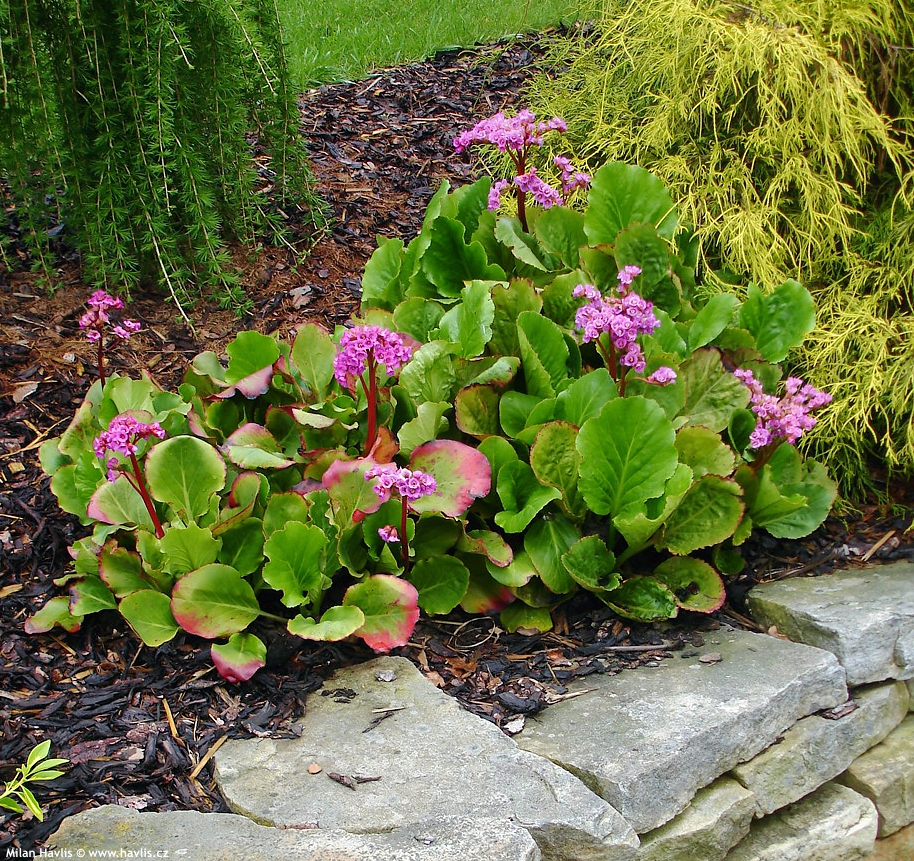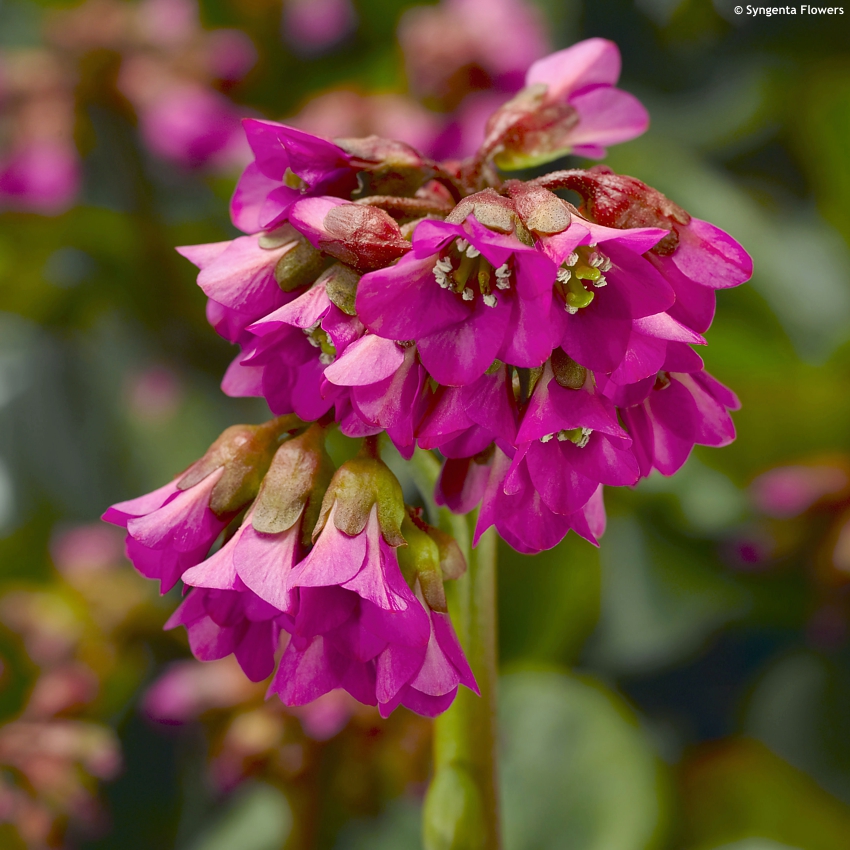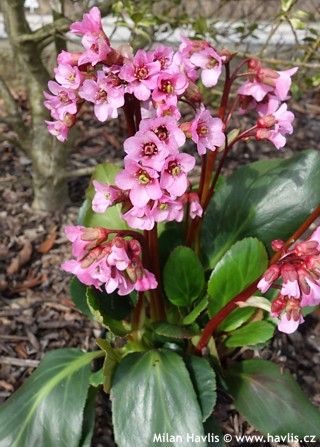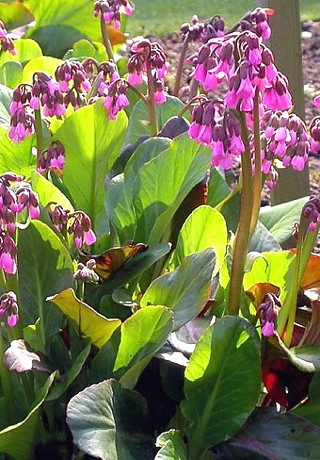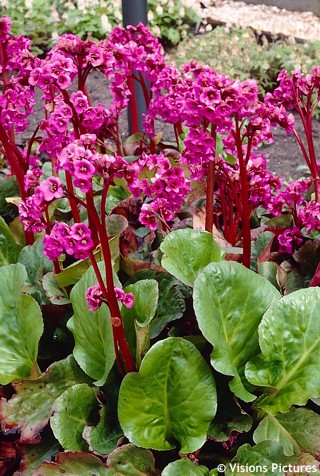Bergenia cordifolia 'SHOESHINE™ ROSE' elephant's ears
Bergenia
Elephant’s ears is a great name that best characterizes leaves of this perennial. They are truly shaped like real ears of baby elephants. Most varieties change their colour in autumn and winter adding extra interest to borders and beds, or making a winter window pot looking especially attractive, combined with dwarf conifers or small-leaved plants like hebes. Bergenia was described by German botanist Conrad Moench (1744-1805) and named in honour of another German botanist Karl August von Bergen (1704-1759).
Shoeshine™ Rose a bergenia (elephant’s ears) variety from Syngenta breeders. It produces more compact, dense clumps with smaller, broadly oval to almost rounded, thick, evergreen leaves. They are medium green, pink margined in summer, and gain rose shades in autumn and winter. From late March rise 20-30 tall, sturdy, red stems topped with clusters packed with numerous bell-shaped flowers of rosy pink colour. Sometimes plants re-bloom sporadically during the growing season until October.
Bergenia is a spreading, ground covering perennial with tough rhizomes. It likes moist but well-drained soil, rich in humus but will grow in almost any soil. Growing it in full sun will guarantee profuse flowering and richer foliage colours in autumn and winter. Avoid areas with constant drying winds. Its hardiness is at least -34°C (USDA zone 4), yet it benefits from mulching.
Last update 14-11-2020












